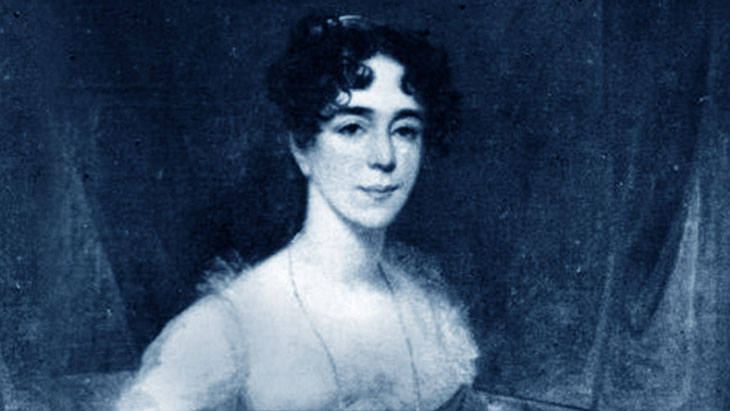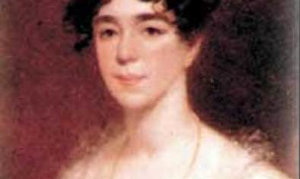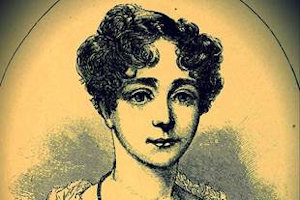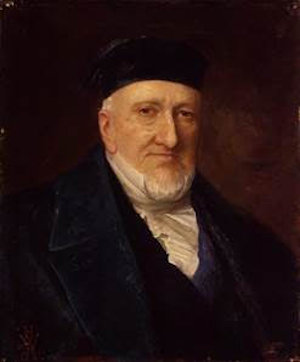 Iran’s Attack on Israel
Iran’s Attack on Israel


10 min read
One of the great patrons of Jewish life supported Jews on three continents.
It was, in the words of Charles Dickens, “The best of times and the worst of times.” While revolution and political strife roiled Continental Europe, Britain in the 1780s and beyond was home to progressive social change, and to a growing community of educated, cultured Jews who flocked to England.
This group of highly educated, ambitious Jews called themselves the “Cousinhood” – brilliant Jewish families who built empires of business and service, married into each other’s families and created a new, vibrant Jewish community. One of the most prominent of these immigrant Jews was the Dutch-born Levi A. Barnet Cohen who moved to London in the 1770s and eventually became one of a dozen Jews newly elected to Parliament, without compromising his Orthodox Jewish faith. He married a brilliant Jewish woman named Lydia and together they raised an observant Jewish family. Their daughter, Lady Judith Montefiore, became a great – and little known – patron of Jewish life.
Born in 1784, Judith was one of seven children, and distinguished herself as a brilliant mind and committed Jew. She learned French, German, Italian, Arabic and Hebrew, gained mastery in art, music, literature – and regularly studied the weekly Torah. From an early age, she learned to occupy two realms: that of the highest levels of English upper-class society, and also that of her deeply held Orthodox Jewish religion.

One of Judith’s strongest childhood memories was of a Tisha B’Av – the Jewish day of mourning for the destruction of the ancient Jewish Temple in Jerusalem, when it’s customary to fast and to sit on low chairs or the floor. She and her sisters were sitting on the floor in her family’s grand London house when a servant ushered in a group of visiting gentleman, including the famous British naval officer Admiral Sir Sidney Smith, who were looking for her father. The men were startled to find Judith and her sisters sitting on the floor in defiance of social norms and protocols.
“I quietly kept my seat,” Judith later recalled, “and when Sir Sidney asked the reason of our being seated so low, I replied, ‘This is the anniversary of the destruction of Jerusalem, which is kept by conforming Jews as a day of mourning and humiliation…. The valor exhibited by our ancestors on this sad occasion is no doubt well known to you, Sir Sidney…and I feel sure that you will understand our grief that it was unavailing to save the Holy City and the Temple.'”
If Admiral Smith was surprised to be given a lesson in history and the Jewish religion by a child, he didn’t show it. Instead he replied that he understood perfectly. Judith later recalled that he “observed that...the memory of the struggles of the Jews in Palestine to remain the rightful masters of the land which God had apportioned to them as an inheritance, would ever remain, not only in the heart of every brave man in the British realm, but also in that of every right-thinking man in all other parts of the world as a glorious monument of their dauntless valor and fervent devotion to a good and holy cause.”
Educated and passionate, Judith Cohen waited until relatively late in life to marry: she was 28 when she met Moses Montefiore, the Italian-born son of a prominent Jewish family who now called England home. Moshe was a force of nature: he’d already built, lost and then re-built a fortune as an international merchant. Most of all, he was religiously observant. While many upper-class British Jews were abandoning the trappings of their religion, he and Judith hoped to build a strong, religiously observant Jewish family together.
Judith was Ashkenazi and Moshe was Sephardi – though many British Jews of the time did not want to marry outside of their own narrow Jewish tradition, Judith and Moshe envisioned a new sort of Jewish life where all Jews were united. Soon after their marriage, they began working to make that vision a reality, supporting Jewish communities in Britain and around the world, and most of all to rebuild Jewish life in the Land of Israel.

Judith used her wealth to support poor Jews, helping build the Jewish Ladies’ Loan and Visiting Society, a Jewish orphanage in London, and educational programs for girls at Jews’ Hospital. Moshe also rose in British society. He was knighted in 1837 (Judith gained the honorific Lady then); that year he was also elected the Sheriff of London – only the second Jew ever elected to that post. Yet despite the Montefiore’s high social position, they were dogged for years by anti-Semitism and snide anti-Jewish remarks.
An observer recorded the abuse the Montefiores received first-hand. “On Sunday, the Montefiores went to the banquet at the Governor General’s,” wrote Pauline Wengeroff, a Russian Jewish woman travelled to Britain and was present at the dinner. She had seen the Montefiores the day before, Shabbat, in synagogue, and noted that while the couple wore simple, modest clothing while in synagogue, at this dinner they were resplendent. “Sir Montefiore sat proudly erect in his red Sheriff’s uniform with gold stripes...and next to him, Lady Judith in the most magnificent dress of an English lady-in-waiting.” A Polish count at the dinner loudly complained to other guests about the supposed cost of Judith’s earrings, repeating the old slander that Jews have too much wealth. “Another could not suppress a snide remark, asking why people were making so much fuss about a Jewess.”
At another dinner party the Montefiores were seated next to a rabid anti-Semite who told the Montefiores that he had recently returned from Japan where, he said, “they have neither pigs nor Jews.” Without missing a beat, Moshe is said to have replied that in that case they should both travel there immediately, so that the Japanese could have “a sample of each”.
In 1840 anti-Semitism in Britain rose to a fever pitch. That year, an Italian priest and his Muslim servant were murdered in the city of Damascus, then part of the Ottoman Empire. Almost immediately, local authorities accused Damascus’ Jews of the double murder. Echoing Medieval blood libels, they accused Jews of killing the pair in order to use their blood to bake Passover matzah. Several Jews were arrested and 63 Jewish children were seized by the police in order to pressure their parents to confess to the killings.
 Sir Moses Montefiore
Sir Moses Montefiore
Despite the patent absurdity of the Damascus Blood Libel, as the affair became known, many anti-Semites in the West seized on it as proof that Jews were somehow evil and not to be trusted. An editorial in the London Times in June 1840 declared that the accusation against Damascus’ Jews was “one of the most important cases ever submitted to the notice of the civilized world… Admitting for the moment (that the case was justified)...then the Jewish religion must at once disappear from the face of the earth…”
The Montefiores organized a committee of influential Jews and traveled to Damascus to intervene in the charges, persuading local authorities to drop charges against the Jews and to release the Jewish children. They also undertook many other trips to help Jews, including visiting Czar Nicholas I in 1846 to ask him to rescind his decree that prohibited Jews from living in regions of Western Russia, along the area bordering modern day Poland.
Sadly, Judith suffered from ill health; she and Moshe were never able to have children. Despite her frequent bouts of sickness, Judith insisted on carrying out a heavy schedule of charitable work and travel. Most important to her and Moshe were the five trips they undertook together to visit the Land of Israel, where they agitated for greater rights from the Turkish overlords, and donated funds to the Jewish towns and farms that were beginning to flourish throughout modern day Israel. Women especially came to visit Judith when she was in the Land of Israel, asking for alms, which she willingly gave.
On her first visit to Israel, in 1836, Judith prayed at the Tomb of the Biblical Matriarch Rachel, just outside of Jerusalem. She “was deeply impressed with a feeling of awe and respect, standing as I did, in the sepulcher of a mother of Israel,” she wrote in her diary. She also remarked that she was only one of six European women to have visited the holy site in the previous century. When she visited the Western Wall in Jerusalem, she recorded her feeling “a sentiment of veneration and interest amounting to awe.”
The Montefiores visited Israel again two years later, where they helped rebuild a synagogue in Safed which had been destroyed by an earthquake. Judith wrote about riding a horse around the walls of Jerusalem, and of visiting six different synagogues representing different Jewish traditions, including Ashkenzai and different forms of Sephardi Jewish heritages. On all their many travels, the Montefiores adhered to Jewish law, keeping kosher and Shabbat. They even traveled with their own shochet who slaughtered animals for them according to the rules of the Torah, ensuring that Judith and Moshe always had access to the highest level of kosher foods.
Back home in England, Judith undertook a major writing project, though she kept it secret and it was years before she was revealed as the author. One of the first Jewish cookbooks, called The Jewish Manual: or Practical Information in Jewish & Modern Cookery; with a Collection of Valuable Recipes and Hints Relating to the Toilette was published in 1846. The author was described only as “A Lady”; historians now believe that Judith was the author. The book champions the values that Judith lived by: she recommends simplicity in dress, an attitude of giving charity and being kind, and a strict adherence to Jewish dietary law. Traditional English dishes were adapted for the kosher kitchen, replacing non-kosher ingredients such as lard or shellfish with kosher alternatives.
On the first evening of Rosh Hashanah in 1862, Judith was at home with Moshe. They ate a festive Rosh Hashanah dinner together, and as Moshe later recalled, the couple gave blessings to each other. After that, they went to bed. Sadly, Judith never woke up; she died peacefully in her sleep, after years of illnesses. She was mourned throughout the Jewish world.
Moshe built a tomb for her in Ramsgate, in southern England, copying the design exactly from Rachel’s Tomb near to Jerusalem, where Judith had prayed so many years ago. He also established a Jewish school nearby, called the Judith Lady Montefiore College. Moshe lived until the age of 101; when he passed away in 1885, he too was buried in Ramsgate near his wife. A few months before he passed away, he made one last bequest: additional funds to be used to maintain Rachel’s Tomb in the Land of Israel, where he and Judith had spent some of their most important and informative times, praying to God and helping their fellow Jews.
